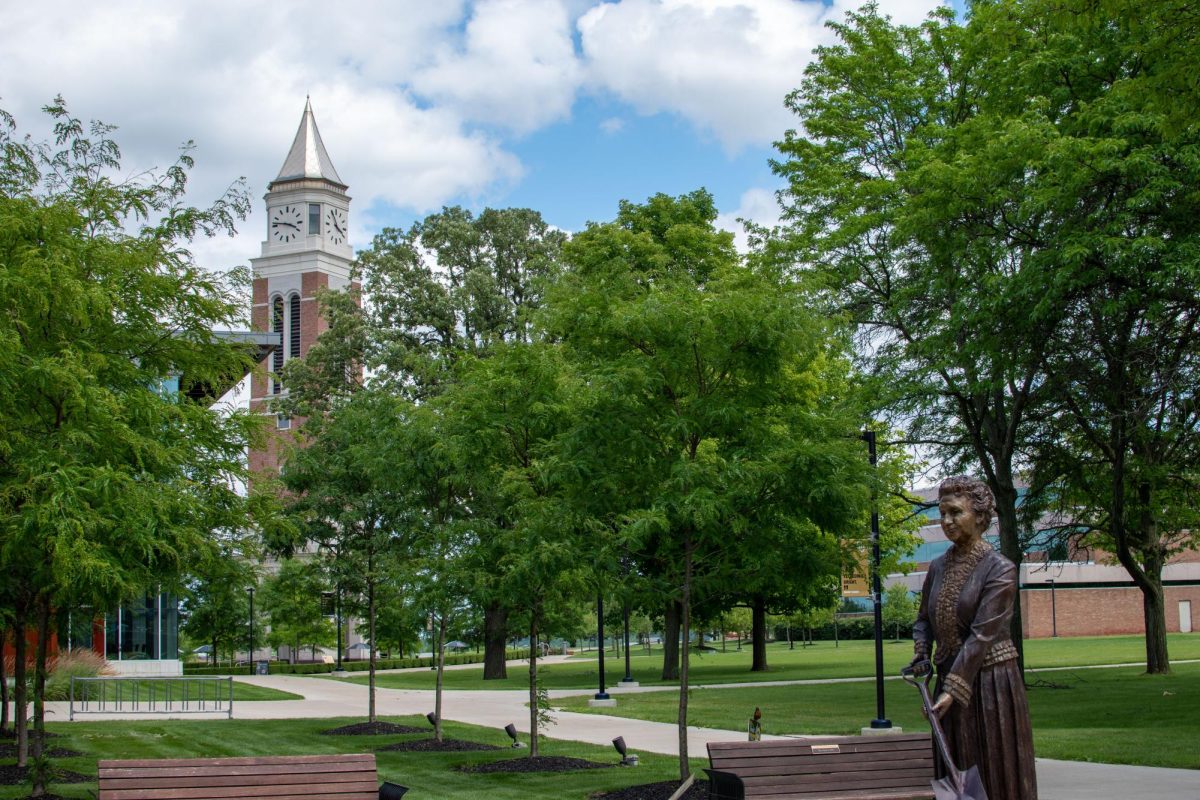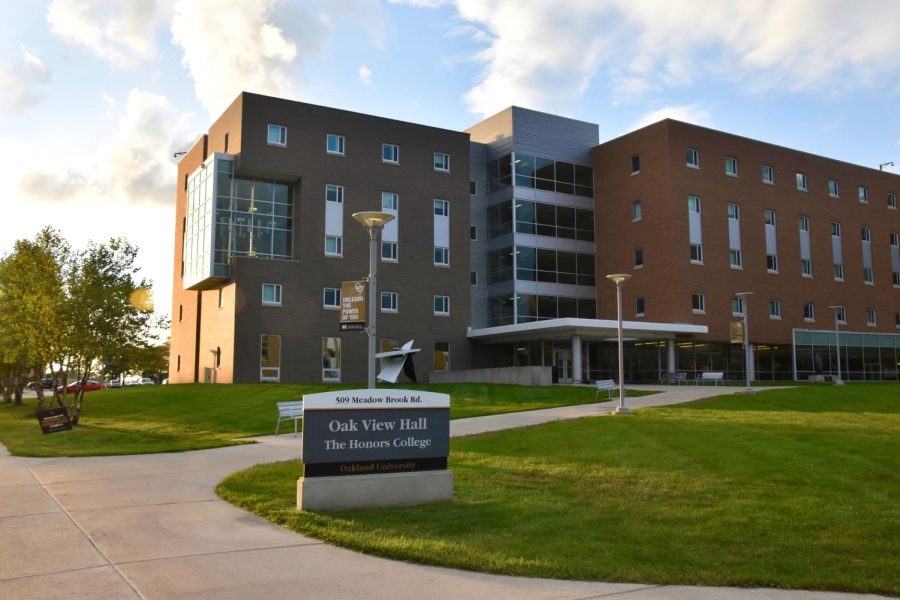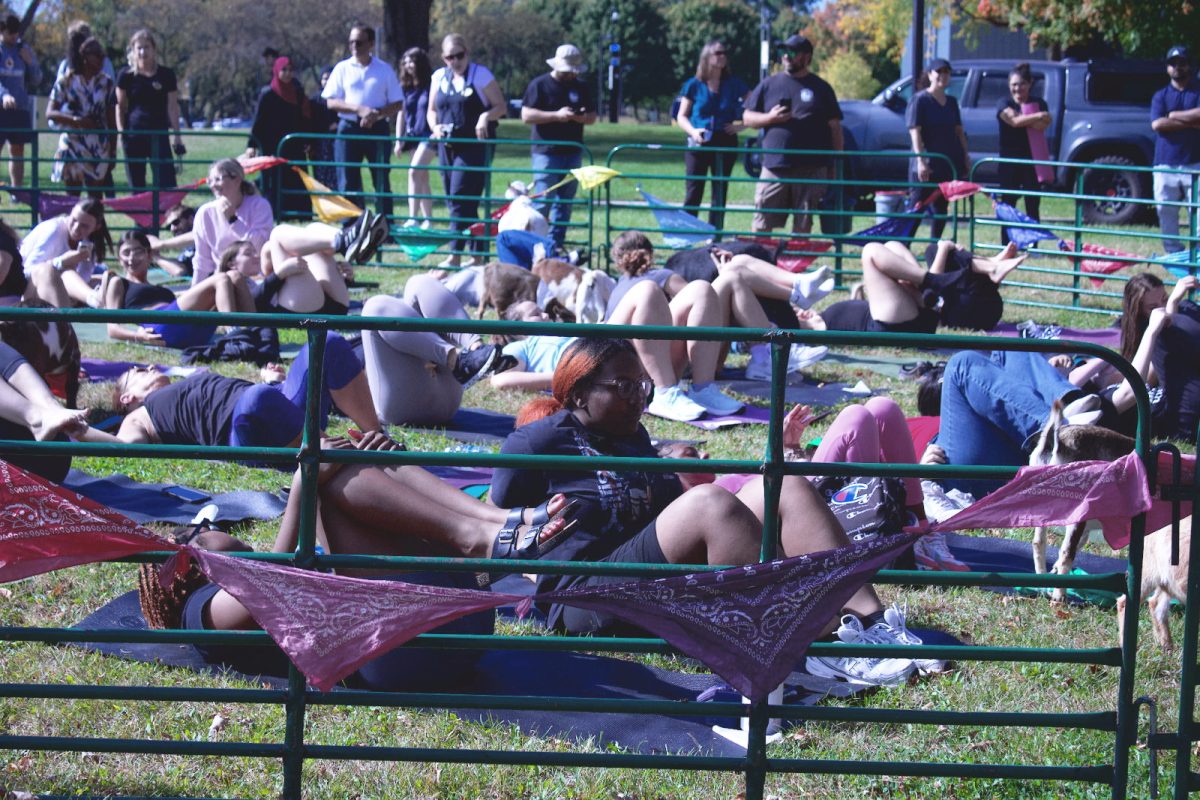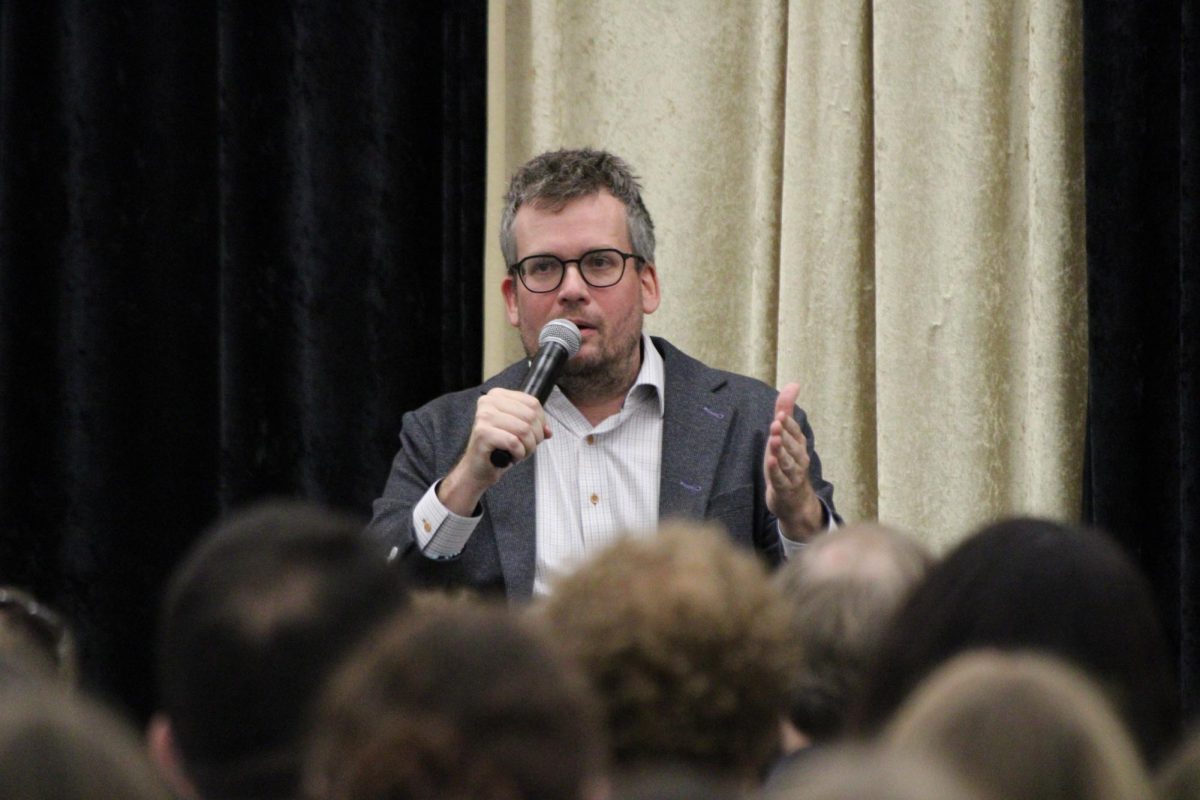Contract negotiations between The Oakland University American Association of University Professors (OU-AAUP) and the OU administration began on June 4 to renew the 2021-2024 agreement for at least three more years.
“The temperature is lower than it has been in some previous negotiating years,” Kevin Corcoran, interim provost and executive vice president for academic affairs, said. “People are trying to get the work done and that’s good for both sides, for the students and the campus.”
Eight bargaining sessions have been held at Kresge Library’s main floor, where nine OU-AAUP negotiators and six OU administration negotiators work on agreements regarding language and economic proposals.
“Both sides sit across from one another at a table and we pass pieces of paper back and forth,” Tom Discenna, OU-AAUP chief negotiator, said. “We read those pieces of paper and we ask questions, then answer those questions for each other.”
“Sometimes we take breaks and we go in our own rooms, talk amongst ourselves, come back and do more of the talking and the paper passing,” Amy Pollard, OU-AAUP executive director, said.
Language proposals are among the first items on the list, addressing specific terminology and grammar that impact how the contract is followed.
“The language has to mean the same thing to both of us, so we have to be really careful that the words we use mean what we think they mean to everybody sitting at the table and to the folks who will read them,” Pollard said.
Some of the first points addressed for language clarification were the faculty salary increase application, special lecturer priority hire and the internal posting of special instructor positions.
“About half of the classes at Oakland are taught by a category of employees called ‘special lecturers,’” Discenna said. “We want to make sure that those protections that exist for [full-time professors] and everyone else are robust enough.”
By June 19, the third bargaining session was held with the OU administration team presenting 10 non-economic proposals. Some of these touched on the arbitration list, faculty tuition waiver and Article VII, “Faculty employment, Reemployment, and Tenure.”
An additional proposal addresses Article IX, “Discipline and Discharge.” This proposal would “equalize workloads for special instructors and improve various processes for administering the contract,” the administration said in their bargaining updates. It could potentially allow OU administration to increase faculty workload if there are deficiencies in research or service performance, OU-AAUP said in their bargaining diary.
Tentative agreements were made on June 26 regarding Article XVII, “Tuition Benefits.” OU-AAUP’s proposal on emeritus status eligibility was also agreed upon. Initially opposing the administration’s discipline and discharge proposal, OU-AAUP also tentatively agreed to a temporary increase in the teaching workload on Article IX.
On the other hand, Article X, “Professional Responsibility,” sparked controversy as a universal workload plan for special instructors was proposed by the administration team, instead of the current system which leaves workload management to the discretion of each department.
“One possibility coming out of this is that [a model] gets laid out and then the units develop their own that align with a university model,” Corcoran said about the workload plan in the Article X proposal.
OU administration also proposed several changes to Appendix A, “Research and Full-Time Practitioner Faculty,” like removing the cap on research professors. This also presented the possibility to “eliminate promotions for these faculty and Full-Time Practitioner Faculty, thereby removing the associated promotional raise,” OU-AAUP said in the bargaining diary.
By July 3, the OU administration presented its initial economic proposals. A salary increase of 12.75% over the proposed five-year contract was part of the proposal alongside a 4% raise for the 2024-2025 academic year, applicable to all faculty.
OU also presented a proposal on Article X interpreting workload increase as “relief” from research or service expectations. In the union’s diary, OU-AAUP said the proposals interfere with the academic units’ workload statements.
“The workload statement is a document that each academic unit has written and has been approved by the university,” Pollard said. “It dictates the three main categories — teaching, research and service. It breaks down what faculty have to do percentage-wise for those things.”
On July 10, OU-AAUP presented its economic proposals. Among increases to promotional raises and travel funds, they proposed:
- A $12,000 one-time lump sum to be added to the base salary of full-time faculty for the 2024-2025 period
- A market adjustment for 2025-2026 and a cost of living adjustment for 2026-2027
- A 4% merit pool in all academic years
“Since 2020, if we look at faculty salaries and their purchasing power, $12,000 is the amount that our salaries have decreased,” Discenna said. “In essence, I make $12,000 less to do my job today than I did in 2020.”
Tentative agreements were made on Article VII, maintaining three years of credit for prior experience for new faculty, including special instructors.
Budget presentations, economic counter-proposals and the discussion of remaining language items were conducted on July 16. Both economic proposals remained stagnant regarding faculty travel fund increase, professional development and the increase of research leave funding.
OU-AAUP presented a counter-proposal on Article X, rejecting the universal teaching load for special instructors. The union also presented a proposal on Article XXIX, “Calendar,” addressing concerns on class days and potential holidays.
OU administration presented a budget and economic update detailing revenue challenges, and budget projections to respond to the union’s economic proposal. In this projection, the administration increased its economic offering to a 12.95% raise over five years.
“We don’t have a bottomless pit of money,” Corcoran said. “If three out of every $4 we have comes from tuition, how do we make it affordable so that students are able to get the benefit of an OU education?”
Appendix Q, “Medical Insurance Advisory Group,” saw a refusal from the administration to introduce an advisory group as proposed by the union.
The last meeting, held on July 18, saw little progress on workload changes — now encompassed within Article X, “Professional Responsibilities.” Counter proposals regarding academic titles and compensations were exchanged, specifically about the special lecturer definition and retirement contributions.
Academic calendar nuances were also being discussed. The union presented a proposal on Article XXIX and also mentioned the need for campus-wide discussions on calendar updates.
The next bargaining session was scheduled for July 23, with expected discussions on the remaining language items and economic counter proposals.
Corcoran gave some final thoughts on the bargaining process thus far.
“This contract that’s coming to an end in a month was negotiated in the summer of 2021,” Corcoran said. “Did we know what the world was going to look like? Did we know what enrollment was going to look like? It was a really challenging time to do a contract negotiation.”
“While at times there will be some heated discussions — because we’re talking about people’s livelihood here — everybody still has the student’s best interests at heart. It is important that we recognize that we’re all trying to get to the same place, we’re just trying to take different paths.”
For more information, visit the OU-AAUP bargaining diary and OU administration updates.













N. Jonas • Jul 31, 2024 at 1:31 PM
Executive management is being disingenuous when it claims to offer a “12.75%” raise. In reality, it’s offering a series of much smaller raises spread across five years, and their effect isn’t additive.
In the first year, management proposes to offer a rough *maximum* raise of four percent (in reality, most faculty would receive lower). Inflation this year is roughly 3.5%, so this amounts only to a 0.5% increase in real wages for a minority of faculty. Everyone else would likely experience a pay cut.
Beyond that, OU is offering an approximate *maximum* of 2% for each of the remaining four years of the contract. Assuming the FED attains an inflation rate of 2%, that amounts to a ZERO PERCENT change in real wages for four years.
OU Executives are essentially proposing a 0.5% increase in real wages over a five-year contract, and that’s only for the lucky few who receive those maximums. This is unacceptable.
Nivedita purports to be an economist, so she should be able to explain why this offer is deeply insulting to faculty. If she can’t, perhaps its time to retire.
demoralized • Jul 24, 2024 at 12:59 PM
“A salary increase of 12.75% over the proposed five-year contract was part of the proposal alongside a 4% raise for the 2024-2025 academic year, applicable to all faculty.” This is a misrepresentation because of the magic “merit pool” part.
“Did we know what enrollment was going to look like? It was a really challenging time to do a contract negotiation.” So, yeah: throw faculty under the bus! And whose job is it to plan for predictable and COVID-unrelated enrollment issues?